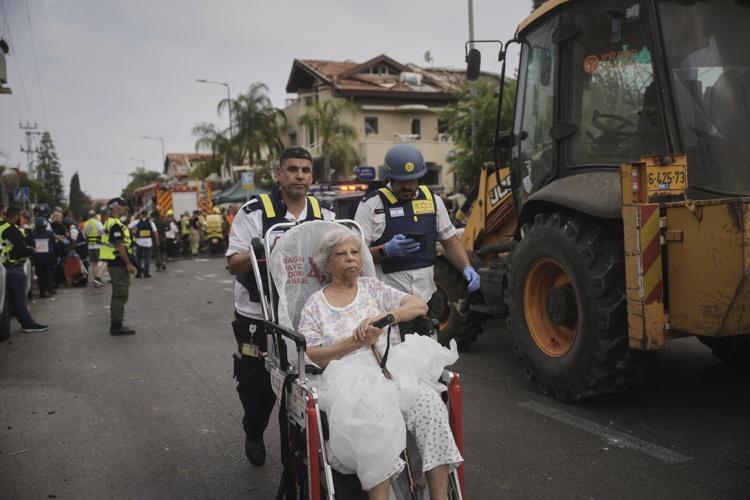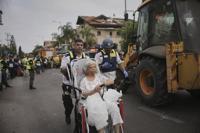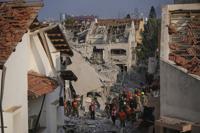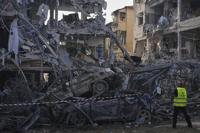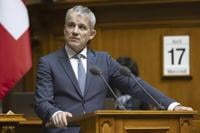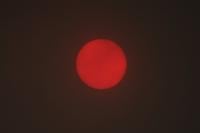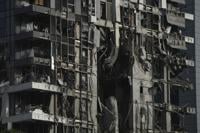DUBAI, United Arab Emirates (AP) — Iran launched retaliatory missile and drone strikes on Israel into Saturday morning, killing at least three people and wounding dozens, after a series of blistering Israeli attacks on the heart of Iran’s nuclear program and its armed forces.
Israel’s assault used warplanes — as well as drones smuggled into the country in advance, according to officials — to assault key facilities and kill top generals and scientists. Iran’s U.N. ambassador said 78 people were killed and more than 320 wounded in the attacks.
Israel asserted the barrage was necessary before Iran got any closer to building a nuclear weapon, although experts and the U.S. government have assessed that Tehran was not actively working on such a weapon before the strikes.
Iran retaliated by launching waves of drones and ballistic missiles at Israel, where explosions lit the night skies over Jerusalem and Tel Aviv and shook the buildings below. The Israeli military urged civilians, already rattled by sparked by Hamas' Oct. 7 attack, to head to shelter for hours.
Strikes could derail nuclear talks
Israel’s strikes also put further talks between the United States and Iran over a nuclear accord into doubt before they were set to meet Sunday in Oman. Iran’s Foreign Ministry spokesman called further nuclear talks with the United States “meaningless” after Israeli strikes on the country, state television said.
“The U.S. did a job that made the talks become meaningless,” Esmail Baghaei was quoted as saying. He added that Israel had passed all Iran’s red lines by committing a “criminal act” through its strikes.
However, he stopped short of saying the talks were cancelled. The Mizan news agency, which is run by Iran’s judiciary, quoted him as saying: “It is still not clear what we decide about Sunday's talks.”
Iranian missiles strike Israel
Iran’s Supreme Leader Ayatollah Ali Khamenei said in a recorded message Friday: “We will not allow them to escape safely from this great crime they committed.”
Iran launched waves of missiles at Israel late Friday and early Saturday. Iranians awoke Saturday to state television airing repeated clips of strikes on Israel, as well as videos of people cheering and handing out sweets. Israel's military said more drones were intercepted near the Dead Sea early Saturday.
A hospital in Tel Aviv treated seven people wounded in the second Iranian barrage; all but one of them had light injuries. Israel’s Fire and Rescue Services said they were wounded when a projectile hit a building in the city. A spokesperson for Beilinson Hospital said one woman was killed.
Hours later, an Iranian missile struck near homes in the central Israeli city of Rishon Lezion, killing two more people and wounding 19, according to Israel’s paramedic service Magen David Adom. Israel's Fire and Rescue service said four homes were severely damaged.
Meanwhile, the sound of explosions and Iranian air defense systems firing at targets echoed across central Tehran shortly after midnight on Saturday. An Associated Press journalist could hear air raid sirens near their home.
Iran’s semiofficial Tasnim news agency reported a fire at Tehran’s Mehrabad International Airport. A video showed a column of smoke and flames rising from what the outlet said was the airport.
The Israeli military said it carried out overnight strikes on dozens of targets, including air defenses, “in the area of Tehran.”
Israel’s paramedic services said 34 people were wounded in the barrage on the Tel Aviv area, including a woman who was critically injured after being trapped under rubble. In Ramat Gan, east of Tel Aviv, an AP journalist saw burned-out cars and at least three damaged houses, including one where the front was nearly entirely torn away.
U.S. ground-based air defense systems in the region were helping to shoot down Iranian missiles, said a U.S. official who spoke on condition of anonymity to discuss the measures.
Strikes raise fears of all-out war
Israel's ongoing airstrikes and Iran's retaliation raised concerns about all-out war between the countries and propelled the region, , into even greater upheaval.
Countries in the region condemned Israel’s attack, while leaders around the globe called for immediate deescalation from both sides.
Israel had long threatened such a strike, and successive American administrations sought to prevent it, fearing it would ignite a wider conflict across the Middle East and possibly be ineffective at destroying Iran’s dispersed and hardened nuclear program.
But triggered by Hamas’ Oct. 7, 2023, attack — plus the reelection of U.S. President Donald Trump — created the conditions that allowed Israel to finally follow through on its threats. Israeli Prime Minister Benjamin Netanyahu said the U.S. was informed in advance of the attack.
On Thursday, Iran was for not complying with obligations meant to prevent it from developing a nuclear weapon.
The crossfire between Israel and Iran disrupted East-West travel through the Mideast, a key global aviation route, but Jordan’s state-run Petra news agent said the country would reopen its airspace to civilian aircraft at 7:30 a.m. Saturday, signaling it believes there is no immediate danger.
Above-ground section of Natanz facility destroyed
Among the key sites Israel attacked was Iran’s in Natanz, where black smoke could be seen rising into the air. It also appeared to strike a second, smaller nuclear enrichment facility in Fordo, about 100 kilometers (60 miles) southeast of Tehran, according to an Iranian news outlet close to the government that reported hearing explosions nearby.
Israel said it also struck a nuclear research facility in Isfahan, and said it destroyed dozens of radar installations and surface-to-air missile launchers in western Iran. Iran confirmed the strike at Isfahan.
U.N. nuclear chief Rafael Grossi told the Security Council that the above-ground section of the Natanz facility was destroyed. The main centrifuge facility underground did not appear to have been hit, but the loss of power could have damaged the infrastructure there, he said.
Netanyahu said the attack had been months in the making and was planned for April before being postponed.
Israel’s Mossad spy agency positioned explosive drones and precision weapons inside Iran ahead of time, and used them to target Iranian air defenses and missile launchers near Tehran, according to two security officials who spoke on condition of anonymity.
It was not possible to independently corroborate those claims.
Over the past year, Israel has been targeting Iran’s air defenses, for a Russian-made air defense battery in April 2024 and and missile manufacturing facilities in October.
The first wave of strikes gave Israel “significant freedom of movement” in Iran’s skies, clearing the way for further attacks, according to an Israeli military official who spoke on condition of anonymity because he was not authorized to discuss details of the attack with the media.
The official said Israel is prepared for an operation that could last up to two weeks, but that there was no firm timeline.
Among those killed were three of Iran’s top military leaders: one who oversaw the entire armed forces, Gen. Mohammad Bagheri; one who , Gen. Hossein Salami; and the head of the Guard’s ballistic missile program, Gen. Amir Ali Hajizadeh.
Trump urged Iran on Friday to reach a deal with the U.S. on its nuclear program, warning on his Truth Social platform that Israel’s attacks “will only get worse.”
“Iran must make a deal, before there is nothing left,” he wrote.
___
Lidman and Frankel reported from Jerusalem. Associated Press reporter Natalie Melzer contributed from Nahariya, Israel and Nasser Karimi from Tehran.

